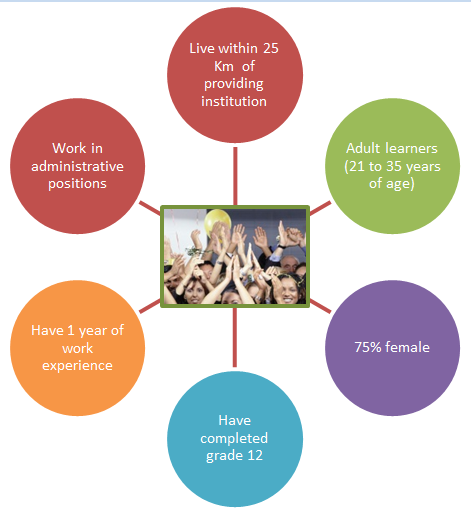Who Are Your Learners?
Before you begin to design your course, it is important to collect information about your potential learners. Knowing key characteristics of the learners who may sign up for your course will inform your design so that the course is relevant and contextual. For example:

Examples
- If you know ahead of time that your course is aimed at high school graduates, you will design learning activities that are geared towards a younger audience, such as webquests.
- If you know ahead of time that your learners have low literacy levels, you will write your content using simple sentence structures and vocabulary.
- If you know that your learners live in rural remote areas, you are less likely to design learning activities that will require going to a library.
Learner Data
Learner data that you may want to collect include:
- Demographic data (age, gender, ethnicity, language)
- Geographical dispersion (where your students are located)
- Prior knowledge and skills (what level of education your students have, what professional development courses they may have taken, and in what areas)
- Prior experience (previous jobs or activities)
- Access to and familiarity with technology (access to a computer, the Internet, CD-ROMs, etc.; how familiar they are with using technology)
Finding Learner Data
The best way to collect data about your potential learners is through a survey or focus groups. However, more often than not there is no time (nor budget) to prepare and send out a survey or to organise a focus group. In this case, you can rely on:
- Your own knowledge of the audience and the community
- Conversations with peers and managers that will allow you to infer some of the key characteristics of the learners
- Data that may be available about the course you are to design, such as the intent and what specific need it will address
- Online searches
The important thing at this point is that you stop to think about the key characteristics of your learners and draft what we call an audience profile.

Example


Activity
Think about the key characteristics of the potential audience for your course and create a bulleted list in the Audience Description section in the course blueprint document indicating gender, prior knowledge, age, etc.